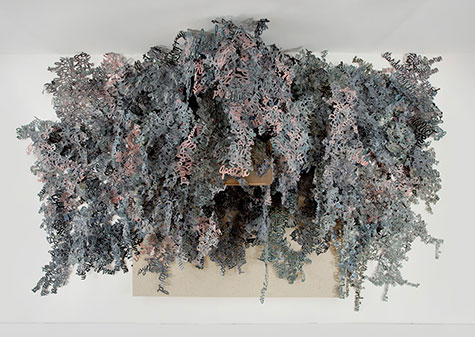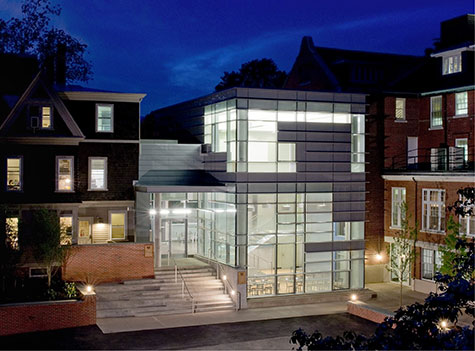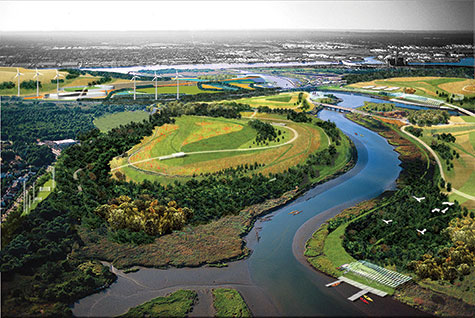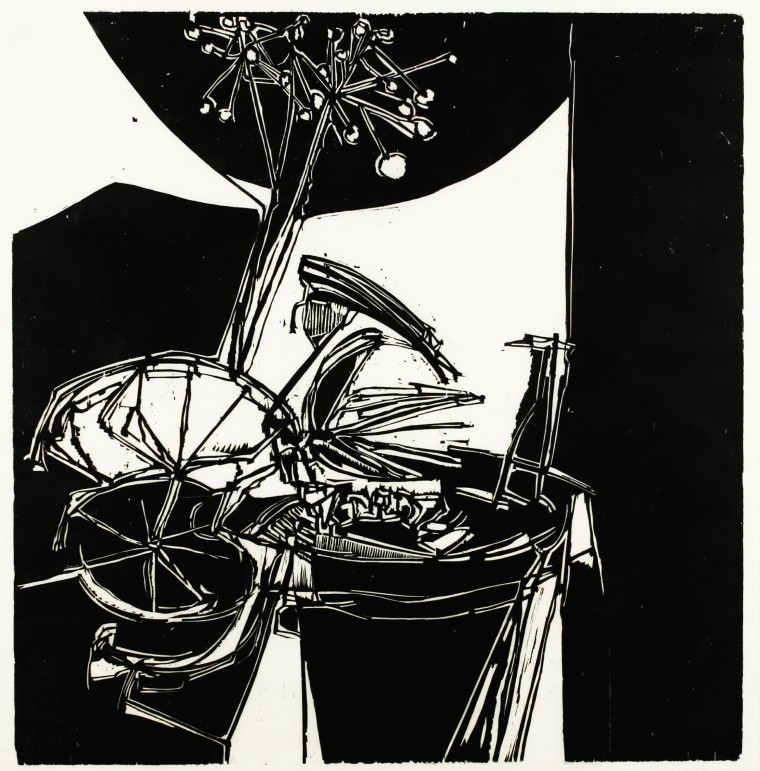Combat engineer, Bauhaus protégé, design innovator, beloved mentor, distinguished painter, amateur chef, steadfast partner. In “Forty-Seven Views of Leslie Laskey,” documentary filmmaker David Wild offers an astonishingly intimate portrait of this celebrated artist, teacher and poet.
On Thursday, April 9, Laskey, professor emeritus of architecture at Washington University in St. Louis, will return to the Sam Fox School of Design & Visual Arts to receive the Dean’s Medal for outstanding service to the school.
The medal — which recognizes extraordinary contributions to the fields of art, architecture or design — comes as part of the Sam Fox School’s seventh annual Awards for Distinction dinner. In all, the school will recognize seven outstanding alumni and friends of the school who have demonstrated creativity, innovation, leadership and vision in their respective fields.

Distinguished Alumni Awards
In addition to Laskey, Angelyn A. Chandler (BA ’89), senior manager at the New York City Department of Parks, and Thomas M. Hotaling, AIA (MArch ’77), a principal with Ann Beha Architects in Boston, will be honored as Distinguished Alumni in architecture.
Distinguished Alumni in art will be New York-based studio artist Mark Fox (BFA ’85) and Sandy Speicher (BFA ’96), associate partner and managing director of the education practice for IDEO, the global design firm.
Architect and humanitarian activist Eric John Cesal (MArch/MBA ’08, MCM ’09) of San Francisco will receive the Recent Alumni Award, as will Elizabeth Giardina (BFA ’02), vice president of design at Derek Lam 10 Crosby in New York.
The awards ceremony will take place at Palladium Saint Louis, 1400 Park Place. For more information, contact Angela Gunn at 314-935-7382 or email angela.gunn@wustl.edu.

Leslie Laskey
Born in Michigan in 1921, Laskey served in the U.S. Army during World War II and on D-Day was among troops landing on Omaha Beach. After the war, he studied architecture with Laszlo Moholy-Nagy, the pioneer of American Bauhaus, at the Institute of Design in Chicago (now the Illinois Institute of Technology).
Laskey joined the Washington University faculty in 1956 and soon was charged with developing the best design program in architecture by the dean at the time, Joseph Passonneau. Over the next three decades, Laskey would train generations of students and earn numerous teaching honors, including the Distinguished Professor Award from the Association of Collegiate Schools of Architecture.
Named emeritus professor in 1987, Laskey remains a working artist and shows regularly at Bruno David Gallery in St. Louis. In 2006, a group of Sam Fox School alumni founded Studio L, which sponsors an annual design competition known as the “Laskey Challenge.” The film “Forty-Seven Views of Leslie Laskey,” which chronicles Laskey’s life over an 11-year period, premiered in 2012.

Sam Fox School of Design & Visual Arts
The Sam Fox School is a unique collaboration in architecture, art and design education. Offering professional studio programs at both the undergraduate and graduate levels, the Sam Fox School links four academic units — the College of Art, College of Architecture, Graduate School of Art and Graduate School of Architecture & Urban Design — with the university’s nationally recognized Mildred Lane Kemper Art Museum.
For more information, visit samfoxschool.wustl.edu.

